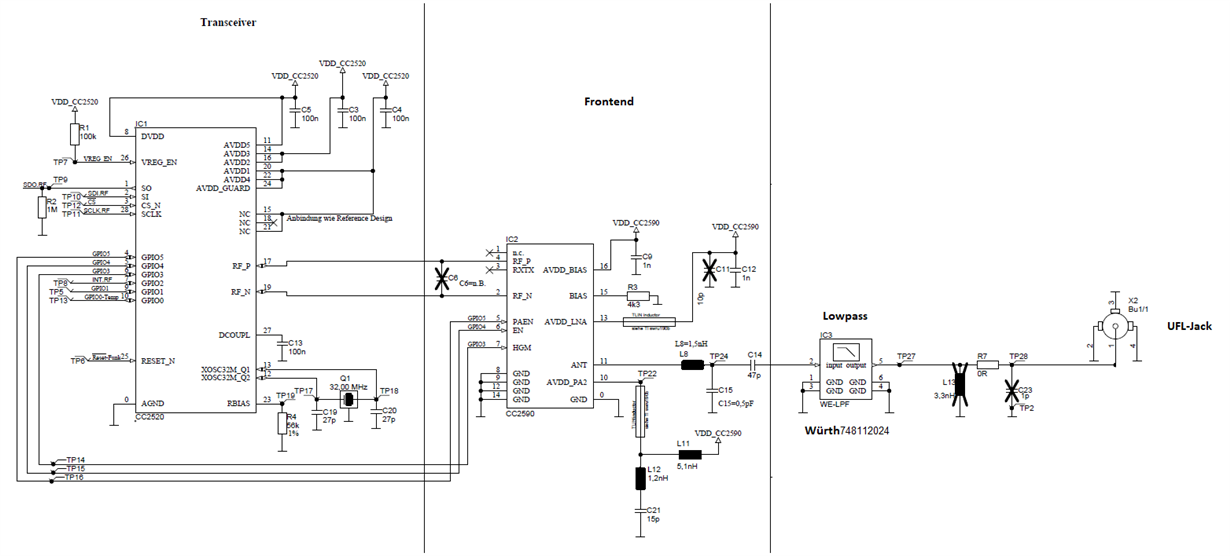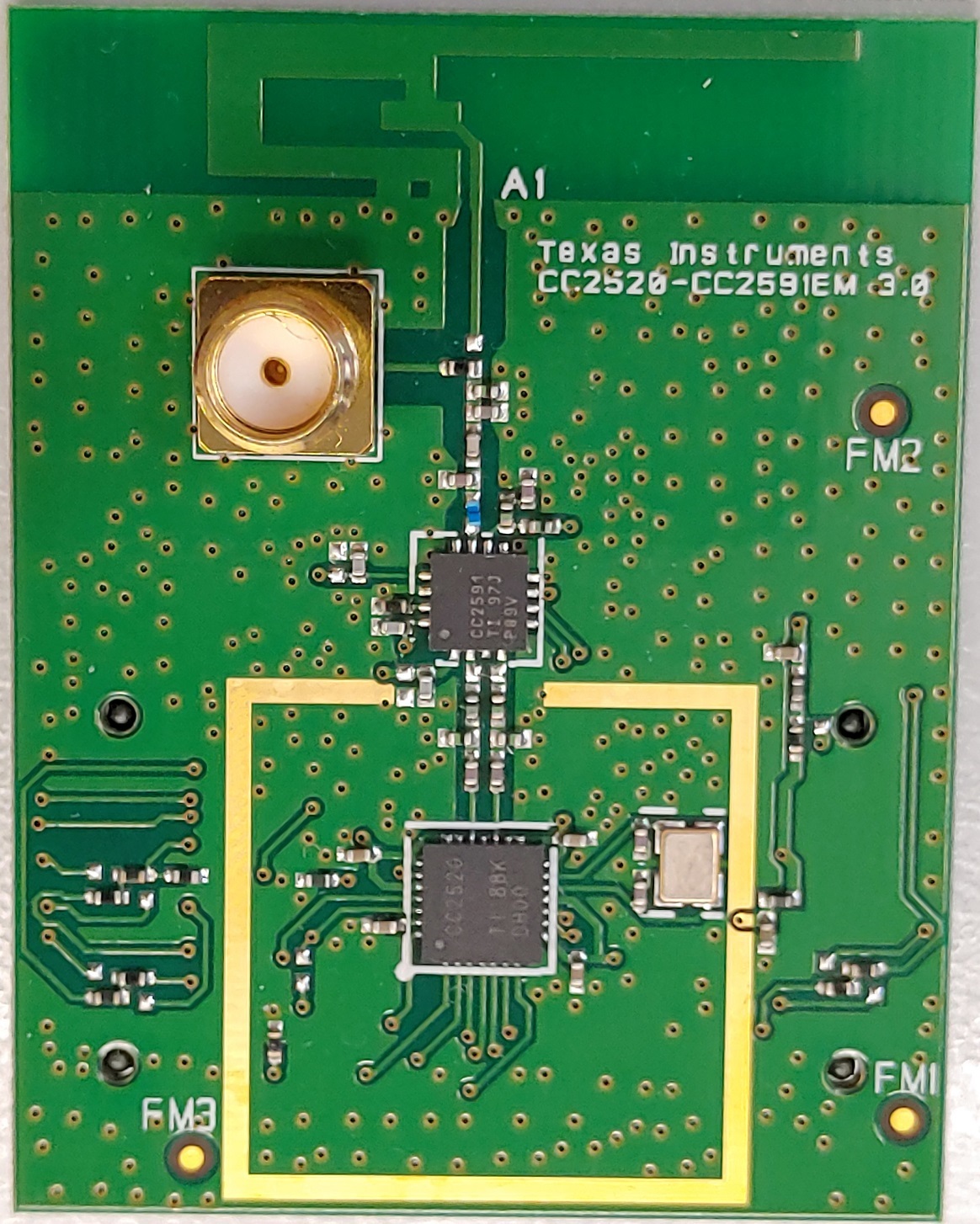Other Parts Discussed in Thread: CC2590, CC2591
Hi team,
Can you have a look at the following customer issue? Please let me know if you need schematics, layout or further information.
We currently have a problem with 2 TI-Zigbee-ICs:
And unfortunately currently have no starting point where to look further....
- CC2520 Transceiver Zigbee
- CC2590 Frontend
Register settings schematic and layout are exactly according to application-notes.
We have no temperature compensation of the transmit power by the software.
Problem:
Modules work perfect as long as the transmitting power is below 4dBm.
If you increase the transmit power (@transmit power register) no communication is possible.
Increasing the temperature of the Module makes communication possible temporarily.
Thank you,
Franz




